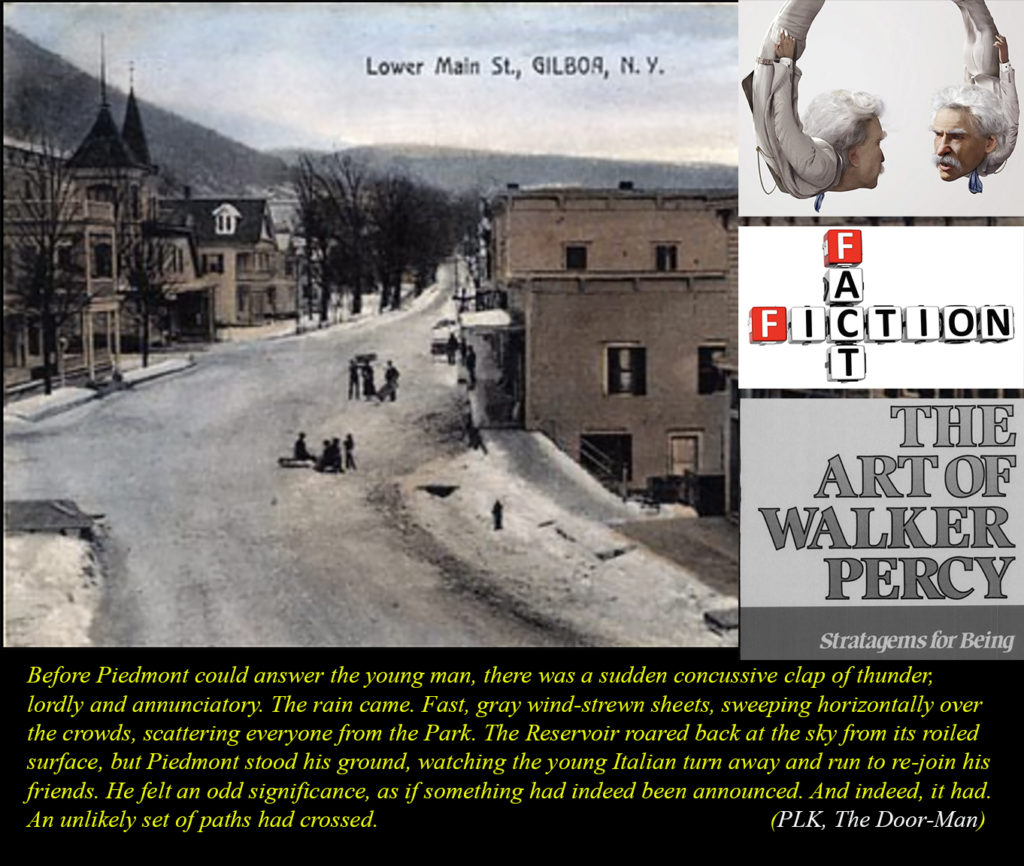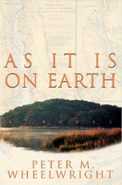
As I inaugurate a new period of ruminating on things (see Rumination 31 for the early history…or Rumination 15 for a screed about ‘things’) and writing them up, I return to an observation by the protagonist Dr. Tom More in Walker Percy’s novel, The Thanatos Syndrome, who muses that “…small, disconnected facts, if you take note of them, have a way of becoming connected.”
There is a lot in this simple remark by Percy’s fictional Dr. More, not least of which is the exceptionally good advice it offers to a writer. It suggests how wonderfully woven the world is. As if the world is there for the taking if one only sits back, pays attention, and allows their imagination to do its work.
Collecting facts is one thing; a few might prove useful for descriptive details in a novel or short story – details that connote sadness, or joy, flippancy, marvel, etc. that might help to direct a reader’s experience of a story. But that is the easy part.
Even most non‑writers know how to provoke a chuckle, jaw drop, or a misty eye…it comes with simply being a human being.
This is not to discount the task set for the fiction writer in converting observed facts into effective ‘qualia’ for their stories. But what about the story itself? What is the nature of the simple and singular quotidian observation that has the capacity to conjure the complex pluralities of a full-blown fictional world?
I suggest that it is the encounter with unlikeliness that counts here – the incongruous convergence of improbable people at an unimaginable event in an unusual place…all of it, real.
My point here is not to re-hash the old saw that “Truth is stranger than fiction.” Mark Twain may have been right, but it is the alchemistic blend of truth with fiction that is stranger still – when an unlikely real-world fact becomes the inspirational artifact that the fiction writer writes toward until the unlikeliness of things hook up and their story is finished.
The Door-Man is based on a set of random and remarkable events that took place at Gilboa, New York in the early years of the 20th century. An account of the actual events is a story unto itself but, for the novelist, there is even a better story – one told by gathering up the actualities and imagining the rest. This is where fact and fiction team up to do their best work – to find a message and a meaning in the unlikeliness of what took place at Gilboa.
Perhaps there is nothing new here – that all meaningful stories emerge from the convergence and consequences of unlikely circumstances. Nevertheless, what occurs before one’s eyes can be difficult to see until it is re-rendered, reminding us about the brief and provisional nature of life on earth and how the woven histories of the places, people, and events give wonderous meaning to it.
The writer cannot set out deliberately to find the unexpected. She must watch, like my paleo-geologist protagonist Winifred Goldring, to see where the drifting continents and fault lines beneath her feet are taking her. Then, go to work.
* Note: This is an abridged version of a longer piece entitled Factual Fiction: An Essay on Unlikeliness which is being sent around to a few lit journals. If it returns to me unrequited, I’ll post it here.
Return to Ruminations…







